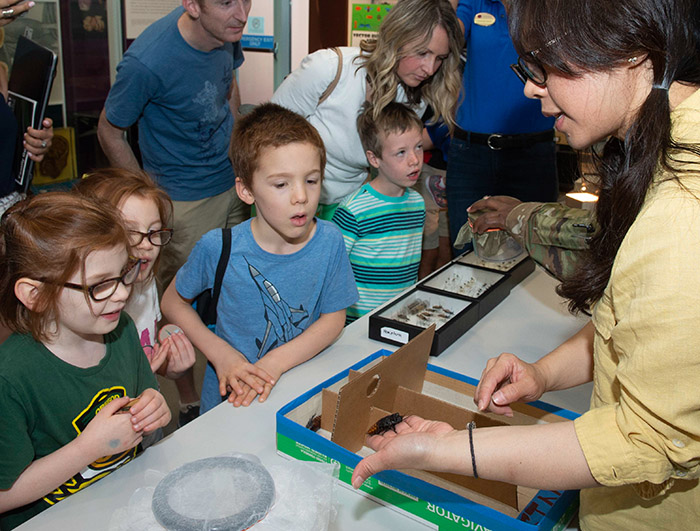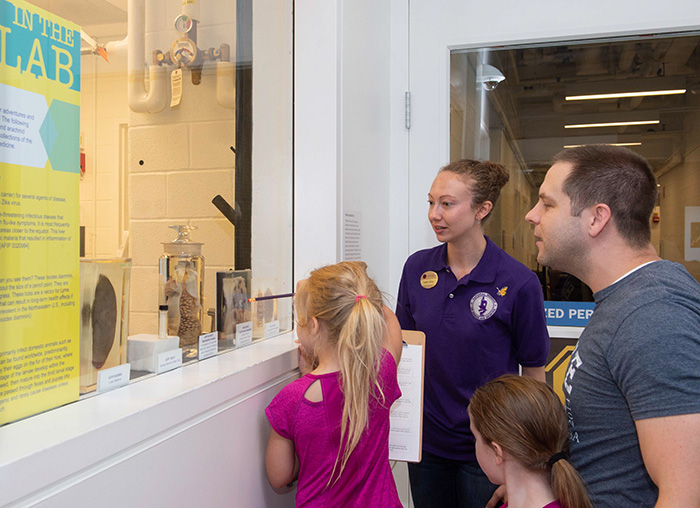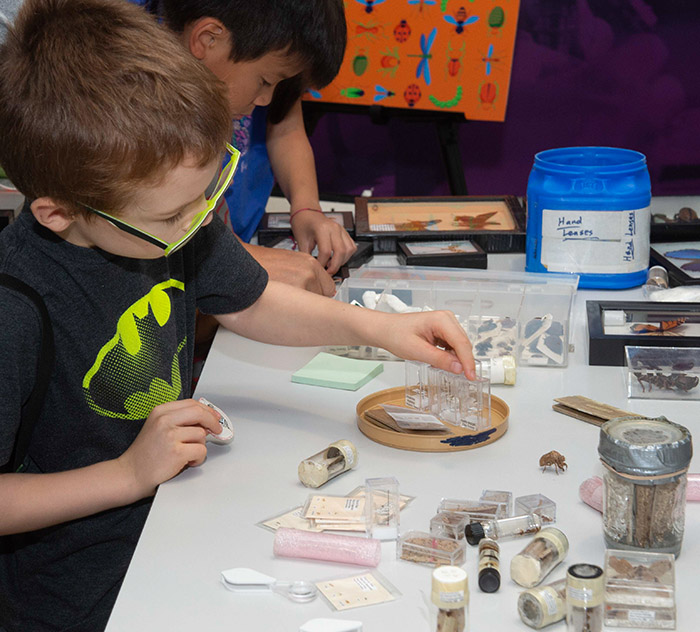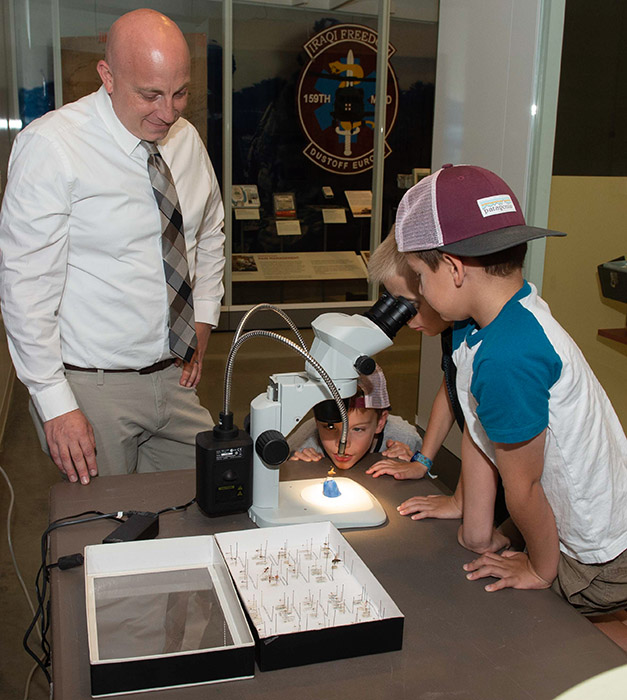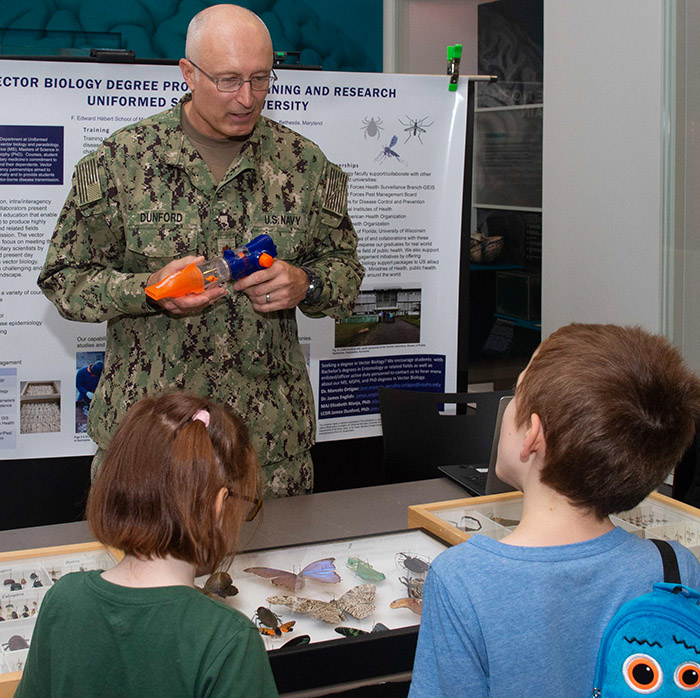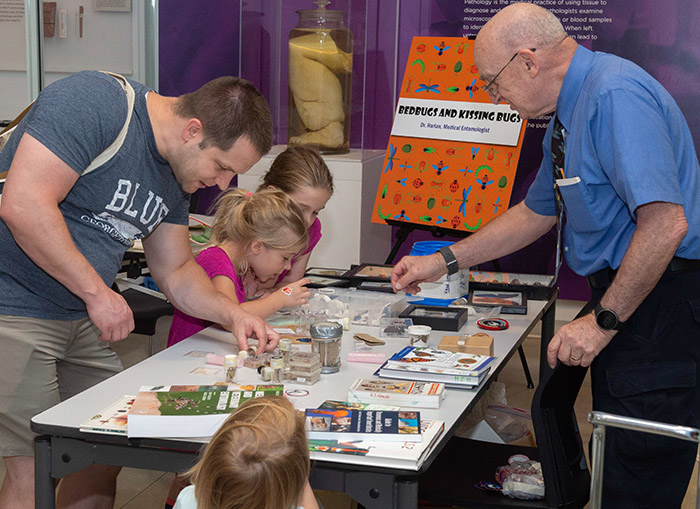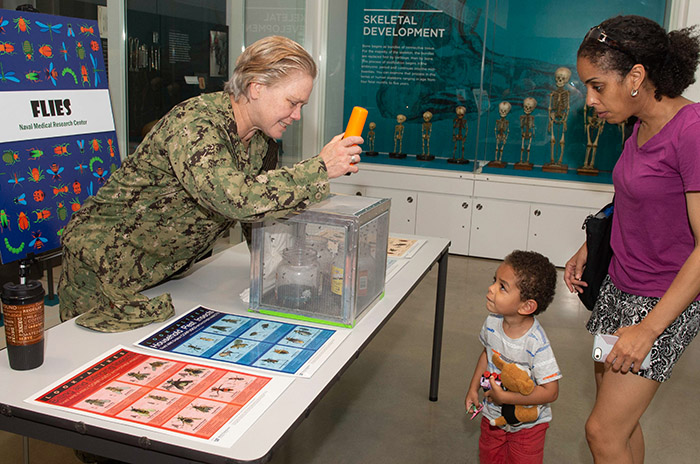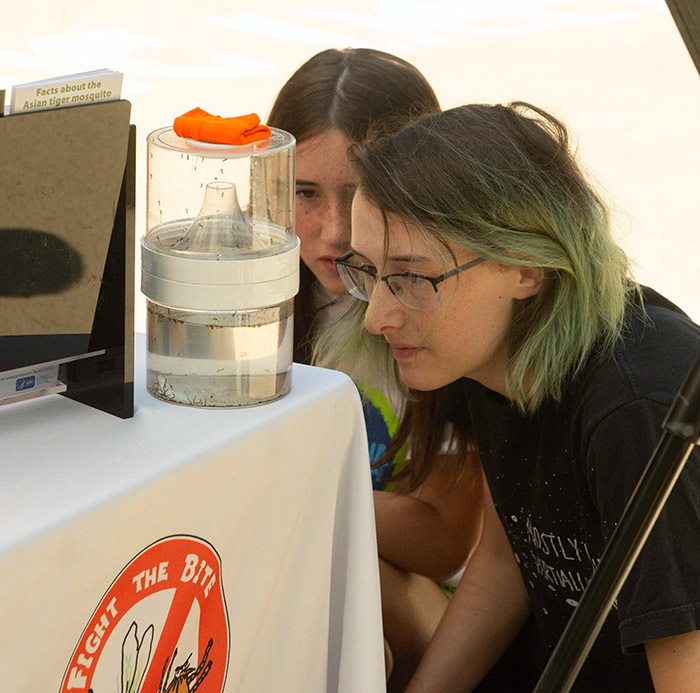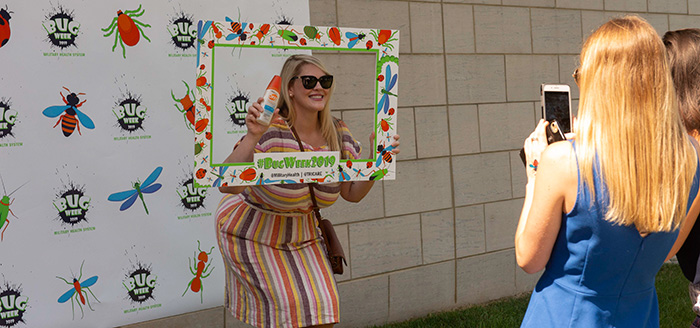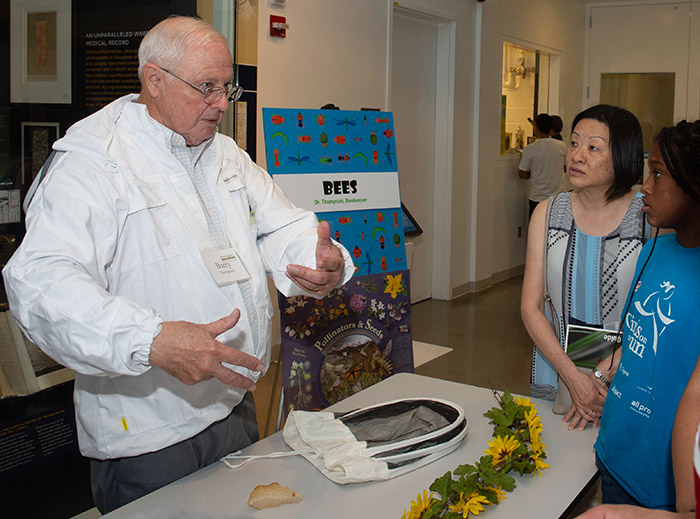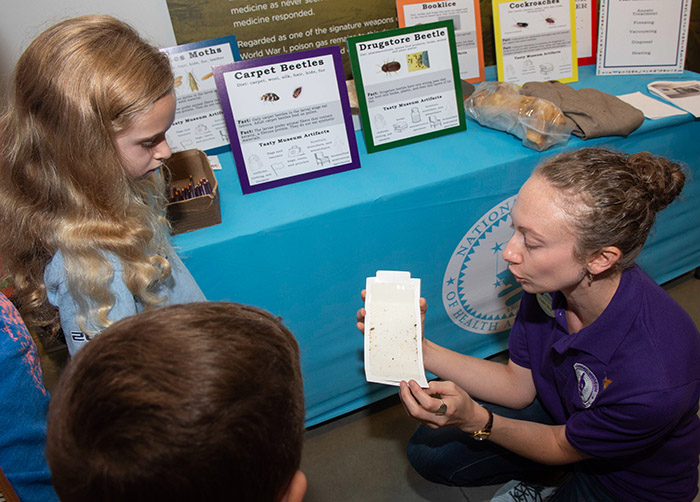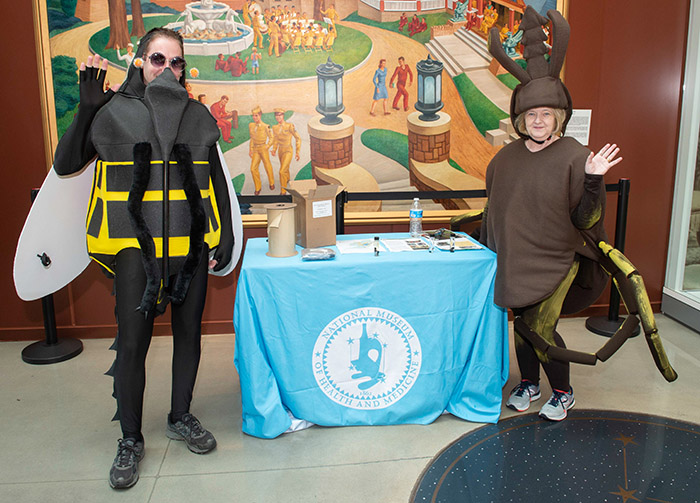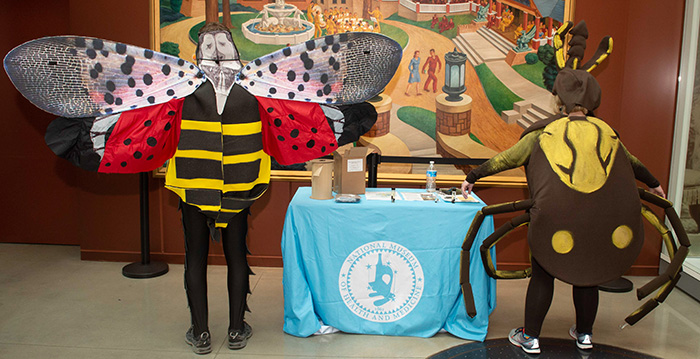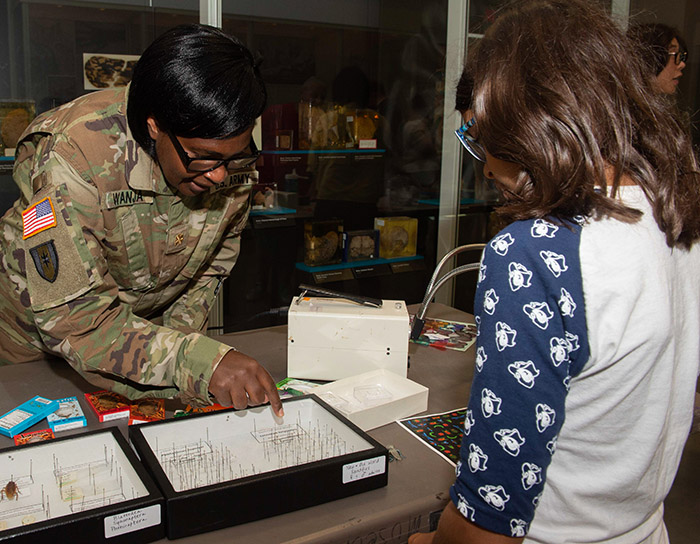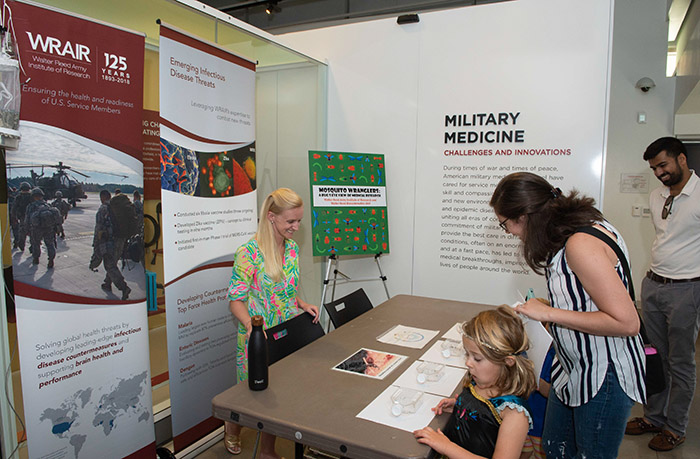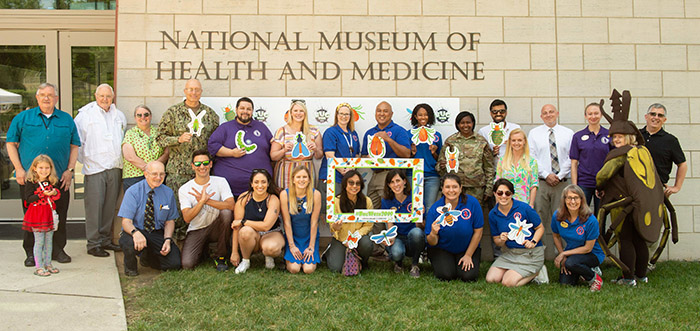Medical Museum Bugapalooza Event Inspires Interest in Entomology
By Jacqueline Gase
NMHM Public Affairs Coordinator
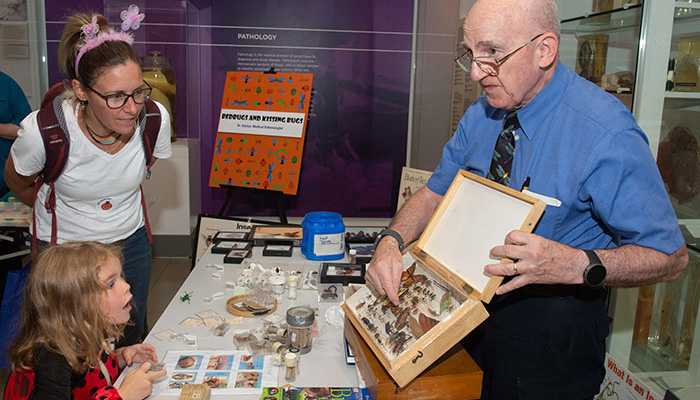
Retired military medical entomologist Dr. Harold Harlan shows a museum visitor preserved bugs during the July 27, 2019, Bugapalooza event at the National Museum of Health and Medicine in Silver Spring, Maryland. (Department of Defense photo by Matthew Breitbart)
Silver Spring, Md. -- Madagascar hissing cockroaches, bedbugs, bottle flies, and mosquitoes were among the live insects that captivated visitors that attended Bugapalooza on July 27, 2019, at the National Museum of Health and Medicine. Kicking off the Military Health System's 2019 Bug Week, presenters from the museum, Walter Reed Army Institute of Research, Uniformed Services University, Naval Medical Research Center, Army Public Health Command, Armed Forces Pest Management Board, Maryland State Beekeeper Association, and Fairfax County Health Department educated audiences on both the beneficial and sometimes harmful nature of bugs.
Retired military entomologist, Dr. Harold Harlan, has been working with bedbugs for more than 40 years. Breeding and providing bedbugs to research organizations, Harlan's work facilitates learning about the species and how to control them. Visitors at the museum interacted with some of Harlan's collection of bugs, learning about the general misconceptions of bedbugs.
The museum's registrar department displayed a behind-the-scenes aspect of collections control. Telling visitors about their holistic approach to integrated pest management, museum staff showed how bugs can harm the museum's collections and how they take steps to protect against pests. Common invaders include clover mites and carpet beetles.
Across the galleries, master beekeeper, Dr. Barry Thompson, discussed how bees pollinate and support a healthy ecosystem and a presenter from the Army Public Health Command was dressed up as a spotted lanternfly, an invasive species that negatively impacts agriculture.
Close by, a NMRC presenter focused on another common bug: the fly. Showing a collection of bottle flies, U.S. Navy Lt. Cmdr. Roxanne Burrus explained the dual nature of flies as a medicinal agent and a transmitter of bacteria. According to Burrus, fly larvae are used for wounds and can save limbs; the flies eat dead tissue leaving behind live tissue for regrowth. However, as a decomposer, they can also transfer bacteria from decomposed material, making people sick.
USU presenters were hands-on, allowing visitors to hold Madagascar hissing cockroaches and a kissing bug as they educated them on vector biology. According to U.S. Navy Lt. Cmdr. James Dunford, a vector is an organism that transmits a disease or pathogen from one host to another. Letting visitors look at vector specimens, USU presenters explained their current research examining what pathogens specific bugs can transmit.
Visitors saw live examples of a common vector from WRAIR entomologists who brought three species of mosquitoes. Aedes albopictus, the Asian tiger mosquito and one of the most common species of mosquitoes, juxtaposed aedes agypti and anopheles stephensi mosquitoes and larvae, the vectors for yellow/dengue fever and malaria respectively. Encouraging visitors to wear insect repellent with at least 20 percent DEET content, WRAIR entomologists discussed their research combatting infectious diseases.
In front of the museum, visitors visited the MHS Bug Week selfie station and made public health posters inspired by the museum's Otis Historical Archives. A fan favorite was Fairfax County Health Department's Andrew Lima, also known as MC Bugg-Z, a musician that raps about vector control. Performing his songs "Zika 101," "West Nile Story," and "Tick Check 1-2," MC Bugg-Z informed visitors that bug-borne illness "prevention is easy, relax and I'll teach ya."
"Bugapalooza helped to raise awareness of the research dedicated to the prevention and treatment of bug-borne illness, as well as showcase the benefits and dangers of certain bugs," said Andrea Schierkolk, the museum's public programs manager. "Maj. Walter Reed, who served on the team that identified mosquitoes as the vector of yellow fever, is highlighted in an exhibit in the same gallery where staff from WRAIR showcased modern research related to the same kind of mosquitoes that their namesake researched over 100 years ago–it was a privilege to share military medicine's continued efforts to understand vectors and meet the challenges posed by bugs worldwide," she said.
The museum's public programs provide forums for informal learning that connect the mission of the Department of Defense museum with the public. For more information about upcoming events, call (301) 319-3303 or visit https://www.medicalmuseum.mil.
